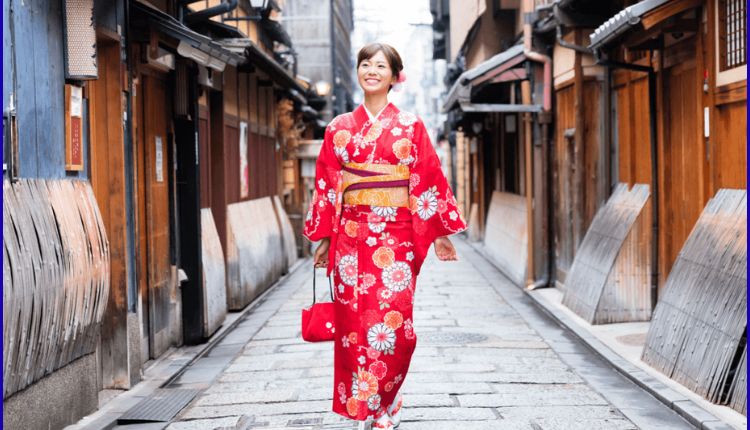However, in the realm of anime, manga, and popular culture, the phrase has taken on multiple nuanced meanings. Often used to explain characters with animalistic features or conduct, Kedamono can talk to literal beasts, anthropomorphic beings, or maybe humans who exhibit primal instincts. This idea has emerged as deeply embedded in diverse genres, from myth and horror to romance and slice-of-life.
As anime continues to adapt and diversify, using Kedamono has elevated, permitting creators to explore themes inclusive of duality, internal warfare, and the battle between civility and instinct. The appeal lies in the rawness of those characters, who challenge the norms of human behaviour and blur the line between humanity and animalistic nature.
Origins and Etymology of Kedamono
In Japanese, the kanji for Kedamono is “獣,” which directly translates to “beast.” Historically, it mentioned wild animals, specifically those that were seen as untamed or risky. The phrase has long carried a negative connotation, implying something uncivilised, dangerous, or out of the boundaries of human society.
However, as with many Japanese phrases, the cultural context and utilisation in media have shifted its meaning. Within current manga and anime, Kedamno characters regularly embody more than simply brute strength or wild instincts. They constitute freedom from social constraints, inner chaos, or the merging of human and animal worlds.
Kedamono in Anime and Manga
Kedamono-kind characters are often found in delusion or supernatural genres. These characters can be anthropomorphic animals, werewolves, fox spirits (kitsune), or maybe cursed beings that retain some beast-like tendencies. Shows like Beastars, Wolf’s Rain, and Inuyasha characterised outstanding Kedamno figures who war with identification, societal expectations, and their twin nature.
In Beastars, as an example, the central struggle revolves around herbivores and carnivores coexisting in a civilised society. Legoshi, the wolf protagonist, embodies the Kedamno archetype perfectly—gentle and reserved, but struggling together with his violent, predatory instincts. His inner turmoil highlights the Kedamono topic of struggling with one’s base goals in the face of societal norms.
In Inuyasha, the titular man or woman is a half-demon with animal-like powers and instincts. He represents both the human and beast worlds and regularly wrestles with his demonic aspect. His personal arc reflects a deeper philosophical query of what it means to be human versus what it means to be a beast.
Kedamono and the Concept of Duality
One of the most powerful themes linked to Kedamno is duality. Characters classified as Kedamono often face an internal battle between their human and beastly facets. This inner battle is symbolic of broader human reviews—how we suppress, deny, or accept the elements of ourselves that can be much less socially perfect.
This duality isn’t always limited to supernatural creatures. Even fully human characters may be metaphorically defined as Kedamno because of their savage conduct, uncontrollable anger, or primitive desires. This portrayal permits authors to delve into complex mental subject matters, exploring how some distance possible crosses before dropping their humanity.
For example, in Tokyo Ghoul, Kaneki undergoes a change that makes him component-human and element-ghoul. Though not an animal, his battle with enormous hunger and violence faucets into the Kedamno idea. His conflict with the beast inside turns into a metaphor for trauma, identification, and societal alienation.
Emotional and Psychological Depth of Kedamono Characters
Kedamono characters often possess widespread emotional and mental intensity. Because in their twin nature, they are commonly depicted as emotionally conflicted, lonely, or misunderstood. Their existence outside the norm makes them wealthy in narrative potential, permitting writers to discover issues like alienation, self-reputation, and love.
Romantic storylines offering Kedamno characters have a tendency to be extra severe. The danger and unpredictability of the “beast” issue provide a layer of anxiety and exhilaration. This dynamic has been mainly popular in genres like shoujo, yaoi, and dark delusion, where the beastly lover trope is used to undermine conventional notions of romance and dominance.
Stories may also explore whether love can tame the beast or if genuine freedom lies in embracing one’s wild nature. This emotional tug-of-conflict is frequently imperative to the narrative arc and offers Kedamno characters a unique role in storytelling.
Kedamono in Japanese Folklore and Mythology
The roots of Kedamono run deep in Japanese folklore. Many mythological creatures—like the kitsune, tanuki, or oni—bring tendencies of untamed animals. These beings often exist in ambiguous roles, neither totally suitable nor evil, which displays the actual international complexity of nature and instinct.
Kitsune, or fox spirits, are recognised for their intelligence and trickery. They can shift between human and fox paperwork and are once in a while depicted as seductresses or smart protectors. Their fluid identity embodies the Kedamno archetype and showcases how folklore has long explored the tension between the wild and the civilised.
Similarly, oni (ogres or demons) are often portrayed as beastly figures who are both terrifying and tragic. These creatures, born from human vice or punishment, are a really perfect metaphor for the Kedamno idea—beasts that were once human or nevertheless retain human tendencies.
Modern Interpretations and Subcultures
In cutting-edge pop culture, especially internet subcultures and fan communities, the Kedamono archetype has given rise to various reinterpretations. Online artwork groups like Pixiv, DeviantArt, and even Reddit feature work and fan fiction that explores beast-human hybrids in creative and often provocative ways.
The bushy fandom has additionally contributed to this evolution, mixing anthropomorphism with deep man or woman backstories, emotional narratives, and opportunity aesthetics. While not synonymous with Kedamno, there’s a thematic overlap in how both discover identification via non-human forms.
Additionally, a few erotic or fetish genres in manga and doujinshi encompass the Kedamno motif, pushing the boundaries of the way beastly characters are portrayed with regard to human characters. These interpretations can be debatable, but additionally highlight the diverse ways humans engage with the concept of the beast within.
Kedamono and the Human Condition
Ultimately, Kedamono isn’t just about wild creatures or sharp claws. It’s a reflection of the human circumstance. By supplying characters who are element-animal, creators invite us to reflect on our personal instincts, fears, and suppressed goals.
These tales challenge the assumption that to be human is to be in control, rational, or moral. They pressure us not to forget what lies below the floor—what takes place whilst we strip away societal guidelines, expectations, and masks. In doing so, Kedamno’s characters regularly end up the most sincere, complicated, and relatable figures in a narrative.
Through the lens of the beast, we explore shame, longing, rage, and love in their rawest form. And in lots of cases, it’s far the Kedamno who teaches us how to take delivery of every part of ourselves, not simply the parts that fit the mould.
Conclusion
Kedamono is a multifaceted idea that transcends its easy translation as “beast.” Within anime, manga, folklore, and fandom, it represents a wealthy symbolic archetype used to explore complicated emotional, social, and mental themes. Whether as literal animals, supernatural beings, or metaphorical portrayals of human nature, Kedamno characters compel us to look at what it means to be wild, loose, and ultimately human.
As this archetype continues to evolve in popular ways of life, its relevance simply grows. The beast is not simply something to be feared or tamed—it’s something to be understood, embraced, and explored. In the end, perhaps we’re all a bit Kedamno.





